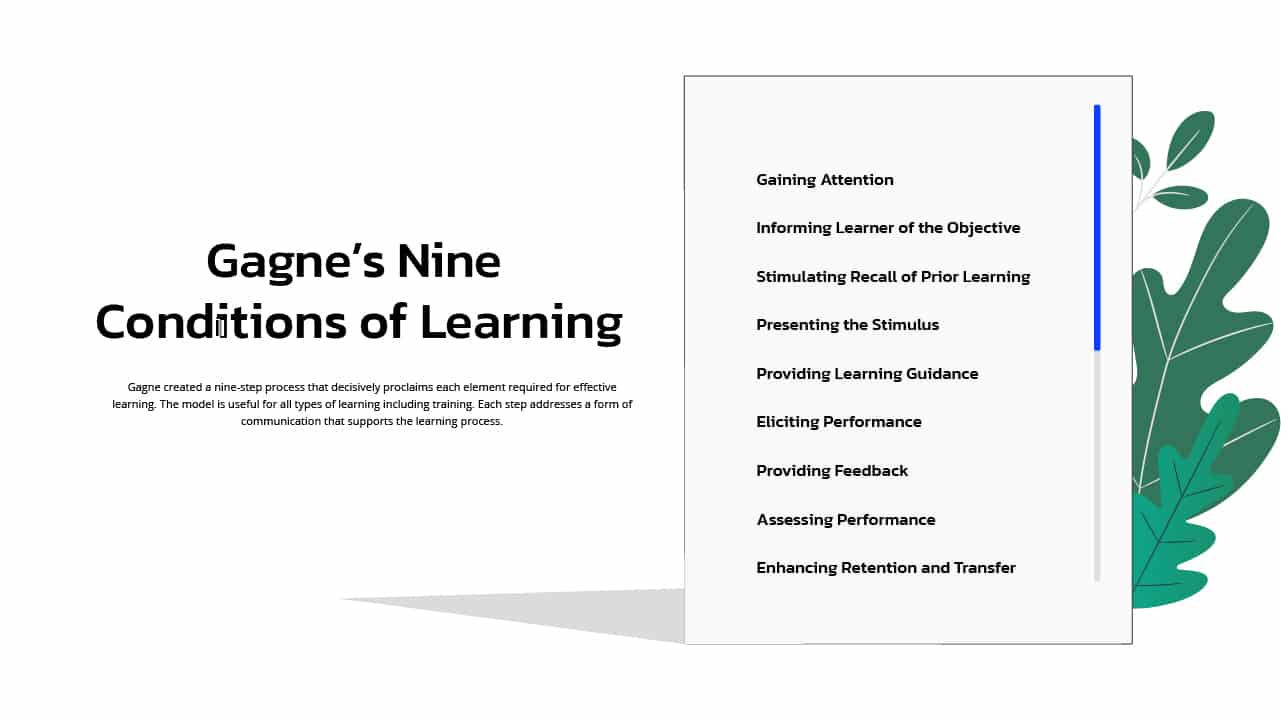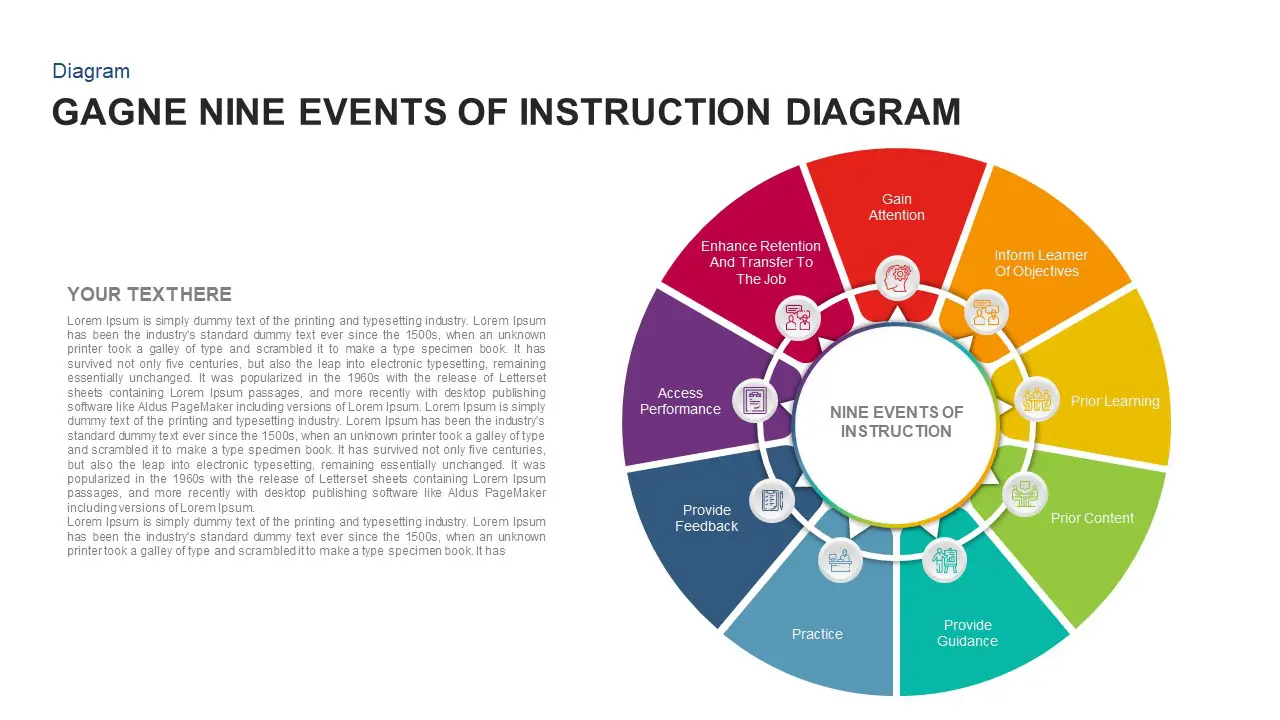Gagne’s nine conditions of learning: A Short guide for trainers, managers, and teachers

What is the first challenge an instructor needs to be solved? You may have many answers because learning is a collaborative activity which needs a synthesis of different learning components. So, your learning approach should be integrated with all components which hold the audience focused.
Everyone has different learning styles. Some are dominant in language while others have in-depth knowledge on the topic. Some show the excellent way of expressions using body movements and gestures. So, how do you present the material so that the learner, or group of learners, is learning effectively? Gagne’s nine conditions of Learning provide a step-by-step approach that can help trainers, managers, and facilitators structure their training so that their learners or groups get the most from their learning opportunities.
Robert Gagne (1916–2002) was an educational psychologist who established the science of instruction in the 1940s. His book “The Conditions of Learning,” first published in 1965, identified the mental conditions that are essential for successful learning.
Gagne created a nine-step process that decisively proclaims each element required for effective learning. The model is useful for all types of learning including training. Each step addresses a form of communication that supports the learning process. When each step is finished, learners are much more likely to be involved and to retain the information or skills that they are being taught.
Gagne’s nine levels of learning have been split into three categories, which have comprised nine taxonomy of instructions.
- Preparation
- Gaining attention
- Informing learners of the objective
- Stimulating recall prior to learning
- Instruction and Practice
- Presenting the stimulus
- Providing learning guidance
- Eliciting performance
- Providing feedback
- Assessment and Transfer
- Assessing Performance
- Enhancing retention and transfer.
Here are Gagne’s nine conditions of learning attached to how you can initiate them using a modern learning policy:

- Gaining Attention (Reception)
Gaining attention is the first phase of Gagne’s learning conditions. The trainer should ensure all the learners are participating in the session wholeheartedly. This can be achieved by presenting the learners with an introductory activity that engages the learner.
Techniques: Gain attention by controlling and managing the volume of your voice, gesturing, showing a short video on the topic of instruction, pose thought-provoking questions, or adding some novelty to the presentation styles.
- informing Learner of the Objective ( Expectancy)
The trainer must transfer the knowledge that the team knows what they need to learn, and what the objectives of the learning are, and what will benefit it provides to them.
Techniques: describe what they able to do after the completion of the session, and explain how their learning will benefit in the long run.
- Stimulating Recall of Prior Learning ( Retrieval)
Our perception is based on prior experience. So when you giving something new to the learners, compare the new information with related information or concepts they have learned in the past.
Techniques: Ask if they have any prior experience with the topic. Ask questions about previous experiences. Test their perception on the previous knowledge. Give an example of an experience similar to what they are learning.
- Presenting the Stimulus ( Selective Perception)
Present the new information in a unique and effective manner. Trainer’s strategies have an immense role to play here. Provide detail descriptions and demonstrations.
Techniques: Structure your information in a logical and easy-to-understand fashion. Try to use a range of different media and styles (such as visual hints, verbal instruction, and active learning) to suit people with different learning styles.
- Providing Learning Guidance (Semantic Encoding)
Provide Coaching on how to learn the skill. Give case studies, and advice of strategies to support them in the learning content and of resources available to them. Provide alternative approaches that show the information that you’re trying to convey.
Techniques: Case studies for real-world application. Graphics to make the visual association. Mnemonics to cue and prompt learning. Use of storytelling or analogies.

help template: Gagne nine events of instruction PowerPoint
- Eliciting Performance (Responding)
At this stage, the learners should demonstrate their knowledge of what you have taught them. Provide them with rehearsal activities to activate the learning process.
Techniques: ask the questions so that they can show their knowledge. Role-playing exercises can be useful. Ask the learner to demonstrate how to use newly acquired skills.
- Providing Feedback (Reinforcement)
Once you’ve elicited performance, it’s significant you communicate to your learners how well they performed. If they replied incorrectly then they need to know how they can improve, on the other hand, if they passed, they deserve to be rewarded and encouraged!
Technique: You can provide positive and negative feedback depending on the responses. For instance, if the learners get the answer incorrect, you can give healthy criticism leading them in the right direction. If they get it correct, then you have to give encouraging words and rewards.
- Assessing Performance (Retrieval)
In order to know the efficacy of learning techniques, the trainer makes a test the learner to determine the desired learning outcomes have been achieved. Team members should complete this test individually, without any help or coaching from the trainer.
Technique: Content-based questions are a fantastic way to check if your learners have retained the information.
- Enhancing Retention and Transfer
Practice makes perfect. Frequent practice with effective feedback is the best way to ensure that learners recall information and use it effectively. By transforming their new knowledge to others they are showing how much they learned from your program.
Techniques: review information and skills. Summarize content. Generate new examples.
Gagne’s nine taxonomy of Learning provides a useful approach that helps managers to shape the learning process. Each different stage supplements the others, and by working through all nine levels, you can aid to ensure that your audience fully understands and keeps information.


